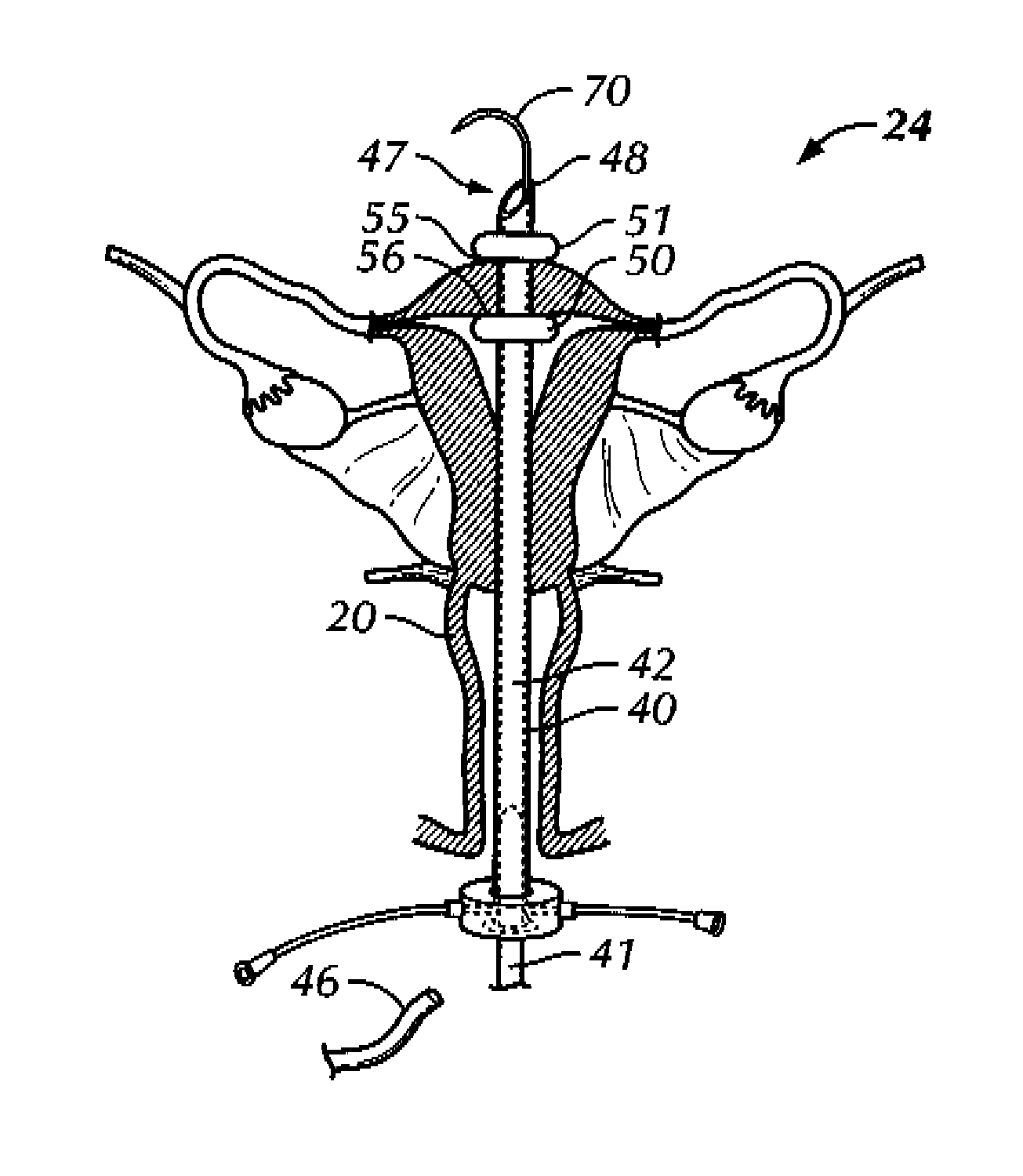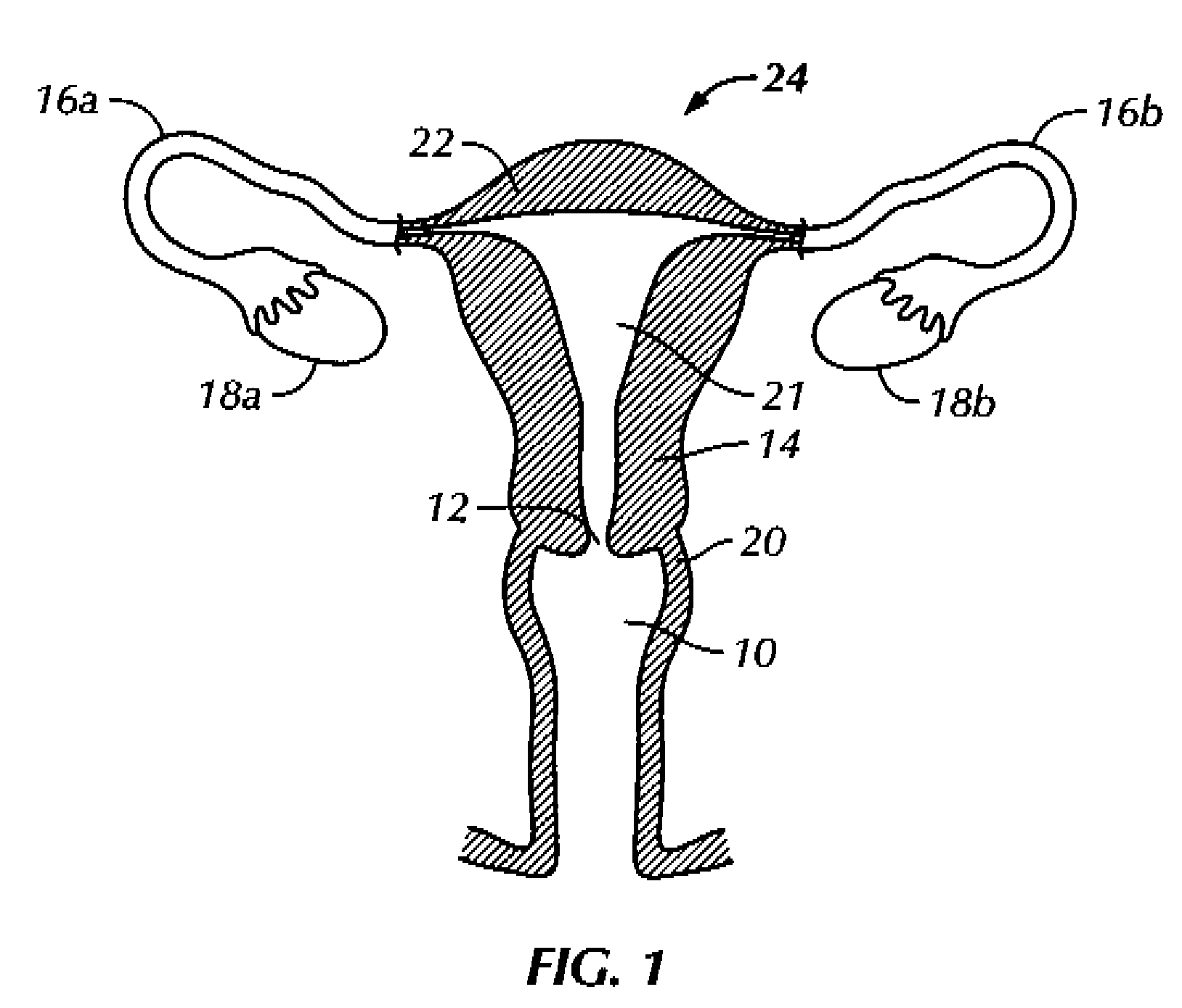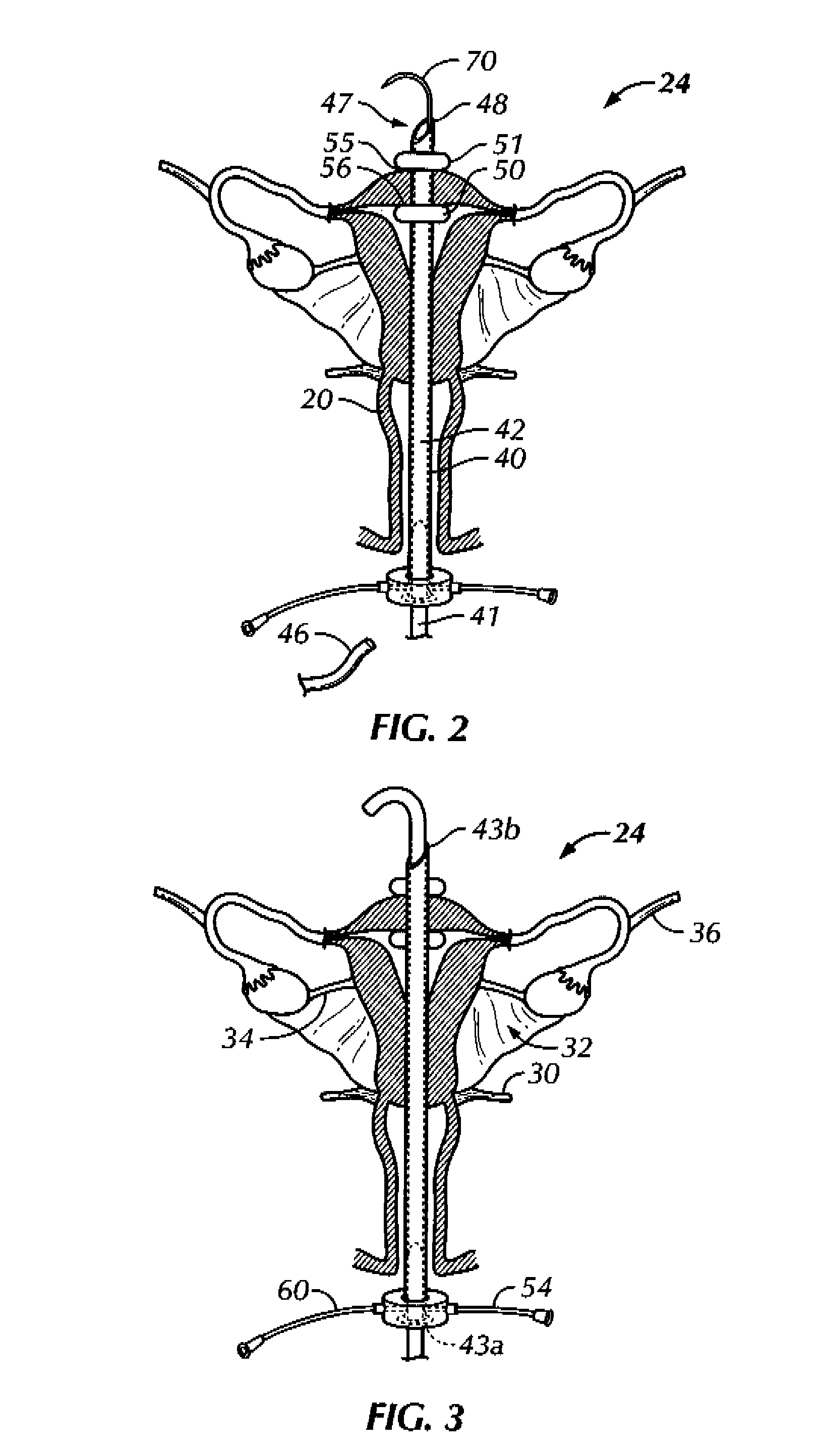Methods and apparatus for natural orifice vaginal hysterectomy
a vaginal hysterectomy and natural orifice technology, applied in the field of vaginal hysterectomy, can solve the problems of difficult particularly severe limitations, vaginal, tlh and lavh surgical approaches, etc., to achieve better antero or retro flexion of the uterus and assist in visualizing the structure of the abdomen
- Summary
- Abstract
- Description
- Claims
- Application Information
AI Technical Summary
Benefits of technology
Problems solved by technology
Method used
Image
Examples
Embodiment Construction
[0037]For perspective, FIG. 1 shows diagram of the female reproductive system including the vagina 10, cervix 12, uterus 14, fallopian tubes 16a and 16b, and ovaries 18a and 18b. The distal portion of the vaginal walls 20 terminate at the cervix 12 which serves as the entrance to the uterus 14 and the uterine cavity 21. This cavity 21 has a distal uterine wall 22 which forms at least the distal portion of the uterus 14. The uterus 14 is joined at its distal end by the fallopian tubes 16a and 16b. These tubes are conduits between the ovaries 18a and 18b at each side of the uterus and the uterine cavity.
[0038]As perhaps best shown in FIG. 3, the ovaries are suspended and secured to the lower abdominal cavity 24 with various ligaments such as the uterosacral ligament 30, the broad ligament generally designated 32, the ovarian ligament 34, and the suspensory ligament 36. In addition, blood vessels that supply blood to the reproductive organs are located at various places around the uter...
PUM
 Login to View More
Login to View More Abstract
Description
Claims
Application Information
 Login to View More
Login to View More - R&D
- Intellectual Property
- Life Sciences
- Materials
- Tech Scout
- Unparalleled Data Quality
- Higher Quality Content
- 60% Fewer Hallucinations
Browse by: Latest US Patents, China's latest patents, Technical Efficacy Thesaurus, Application Domain, Technology Topic, Popular Technical Reports.
© 2025 PatSnap. All rights reserved.Legal|Privacy policy|Modern Slavery Act Transparency Statement|Sitemap|About US| Contact US: help@patsnap.com



